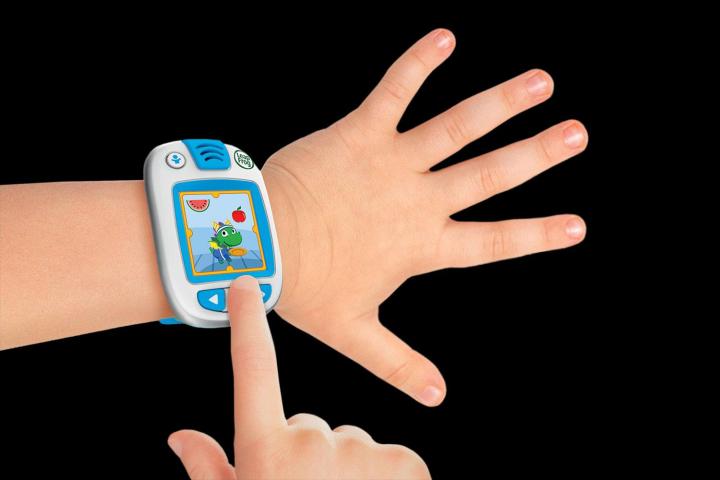
The device that best defines the style of consumer electronics in 2014 won’t be released by Apple or Samsung. It’s not branded by Google or Microsoft, or born in a Silicon Valley incubator by some exciting new hardware startup like Oculus or Pebble. It was announced last week by LeapFrog, the Bay Area-based educational toy maker, which builds those little green tablets and talking pens aimed at teaching kids a thing or two through the use of technology. It’s not the most innovative or most exciting product that will be released this year, and it almost certainly won’t be the best selling, but damned if it doesn’t serve as a handily little statement about technology – and humanity – in 2014.
The LeapBand is a $40 fitness tracker for kids, a Tamogochi-esque virtual pet that lives on a child’s wrist offering them to get off the couch. The device’s name, I’d like to point out right up front, is one small vowel removed from Lap-Band, an invasive gastrointestinal surgery in which an inflatable silicone loop is fit around the top bit of a morbidly obese person’s stomach to slow their food consumption. An example sentence for context: “If you don’t give your kids a LeapBand now, it’ll mean a Lap-Band later.”
“If you don’t give your kids a LeapBand now, it’ll mean a Lap-Band later.”
Studies on the subject place the average amount of time 8- to 18-year-olds spend in front of screens at around eight hours a day, versus the recommended two-hour maximum. Naturally, as the ubiquity and dependency on devices only increases, the amount of time between any manner of physical exertion will continue to grow.
The exponential popularity increase of wearable fitness trackers like the FitBit and the Jawbone Up are an attempt to fight fire with fire. As technology makes us more sedentary, be it from sitting in front screens all day, or simply carting us around instead of walking, it makes sense that we’d attempt to use even more technology to reverse such trends. For plenty of users, FitBit and its ilk have provided an opportunity to do that, providing incentive to get up a little early to head to the gym before work — or even something so simple as walking a few extra blocks at lunch.
But these technologies make sense for more than just office workers at this point. According to the Centers for Disease Control, over the past 30 years, obesity has double in kids and quadrupled in adolescents. Quadrupled. As of 2012, nearly 18 percent of kids in the United States can be classified as obese. The CDC’s site has a pretty solid breakdown of where childhood obesity can lead, if you’re interested in such things. If you’d rather not read about the lingering threat of osteoarthritis, however, just take my word that it’s not good.

When it first arrived in 2006, Nintendo’s Wii was seen as a sort of saving grace: a video-game system that actively engaged children in physical activity rather than planting them on the couch. That success was later replicated by Microsoft with the Kinect and Sony with the PlayStation Move, bringing gesture-based gaming to another level. But while beneficial, a 15-minute daily session of Wii Bowling was never going to be enough to cure the obesity epidemic, particularly as motion control failed to become the sustained gaming revolution that some predicted.
All of which is to say, as absurd a product as it may seem at first blush, the LeapFrog LeapBand is truly a product for our time, a device that gamifies physical activity, making real-world play fun for children by partially digitizing it. It’s enough to make anyone over the age of 18 want to shake their first in the air and curse “kids today,” but in 2014, such a product seems to be a strange and necessary evil. Hell, it means I’ll never have to type the word “osteoarthritis” again, I’ll take it.
Editors' Recommendations
- I wore the Whoop 4.0 fitness tracker for a month. Here’s why I’m getting rid of it
- Oura Ring gets serious about fitness, now syncs with Strava
- Style-deprived fitness bands have helped cheap, ugly smartwatches to flourish
- Wondercise wants you to exercise with perfect form without costly equipment
- Xiaomi’s Mi Smart Band 4 is a desirable, cheap fitness band/smartwatch mash-up


